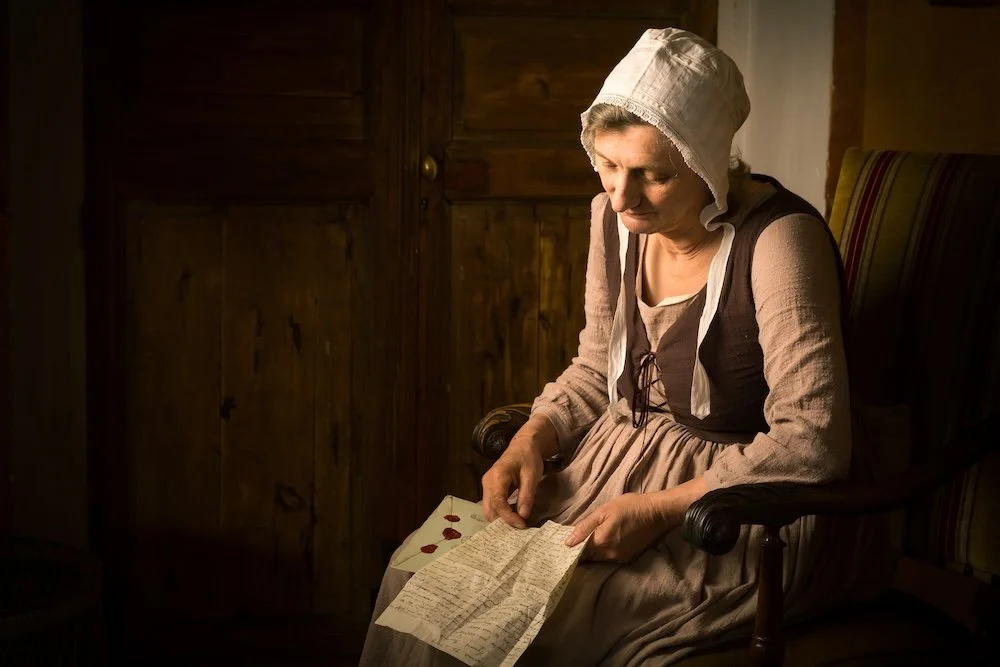Using point of view to write historical fiction characters readers will love
Each point of view (POV) presents its own benefits and challenges. Choosing the best POV for your novel can be a complicated process of making sure the POV serves the story. For this post, I am going to focus on third person limited POV because it is what writers are encouraged to use for most novels these days. Like just about everything else, there are aspects of writing that go in and out of fashion. When it comes to POV, the current trend is often (with lots of exceptions) to write in third person limited.
Benefits and drawbacks of using limited third person
Readers like to get close to the story and feel as though they really get to know the characters. Third-person POV provides the opportunity to go deep without some of the challenges of using first-person. It gives the reader the most access to a character’s thoughts and emotions and keeps them deep in the story while also allowing some narrator support.
Writing this way can feel like a lost opportunity for some historical fiction writers. As the name suggests, it can feel like only a narrow amount of information can be conveyed to a reader. It is true that there are some limitations. Readers will only be able to know what the POV character knows or feels. But there are some ways around this and the benefits of going deep into a character’s point of view usually offset the drawbacks.
Many writers ask why not just use omniscient POV? That answer in truth is because omniscient POV is more difficult to pull off. The head hopping that generally occurs in this POV causes reader confusion. In part, this is because it is rarely done these days, but also because it actually requires a lot more planning on the part of the writer. Having some limits in place using POV can help keep the story focused and the writing on track.
Deepening the POV helps readers experience a scene on a sensory and emotional level by showing the interiority of a character. You can think of interiority as what is private to the character versus what is public for anyone to see. So, a character may act one way while feeling something different inside. This is useful in many ways. When readers are able to see the emotional reaction a character has to a conflict that is happening in their world, it opens up a wide array of information that can be conveyed or amplified. Here are just a few ways you can use deep POV:
reveal secrets or hidden intentions
show internal conflict that complicates a character’s decisions or actions
show brief flashbacks without losing the reader by connecting the past to what is happening in the present through emotional reactions
clarify motivations and relate it to decision-making
Overcoming some of the limitations of using limited third-person POV
The limitations of third person can occasionally be offset by including multiple POV characters, as long as they are not all shown in the same scene. Another technique that is useful in third POV is to allow for occasional steps into the narrator’s perspective. This can be an effective way to convey pertinent details without needing to twist it into dialogue. Often this is used to set the stage at the beginning of a chapter or scene using the narrative funnel. You can think of the narrative funnel like the wide-panned view at the start of a movie that slowly zooms closer in on the main character and their immediate world. Unlike in a movie, a writer can take this one step further and go right into the mind of the main character.
Common mistakes to avoid
Head hopping or slipping out of your main character’s POV
Choosing the wrong POV character for a scene leading to POV slips
Letting the narrator take over
Not going deep enough into the viewpoint character’s thoughts, feelings, and emotional reactions
Give it a try and see how writing in third-person limited changes your story.
It can take a while to get the hang of writing in close third, bringing readers inside the character, but is much harder to convey the emotionality of a story when staying distant. It requires writing with a subtext that is difficult to pull off effectively. A great way to practice writing in deep third is to write a scene how you normally would and then go back and look for places where you can show a reaction or give some insight into a character’s thoughts. Another way to improve your ability to write deeper is to pick up a recently published book and note the places where the author shows the interiority of a character.




